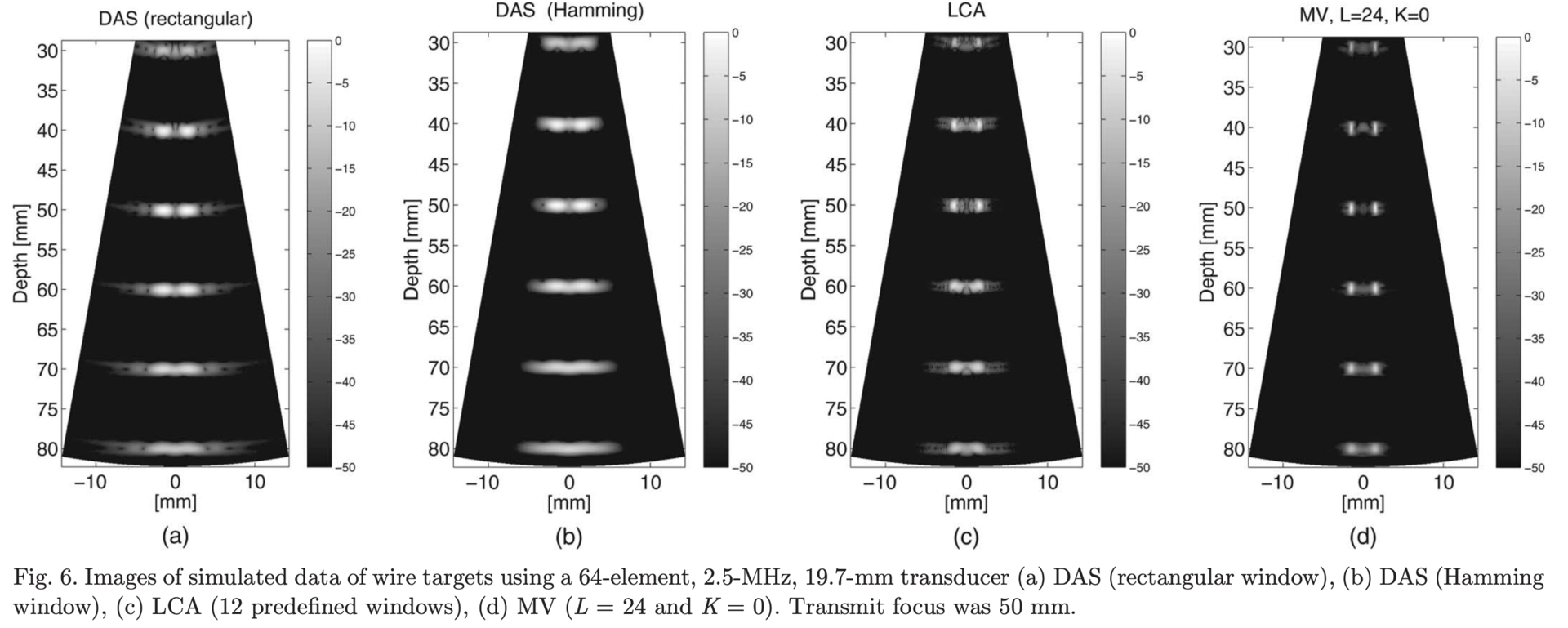The DSB research group has for several years done research on adaptive beamforming, such as the minimum variance (or Capon) beamformer. While adaptive beamformers may boast better resolution than non-adaptive beamformers (e.g., delay-and-sum), their relatively high computational complexity and cost is sometimes a limiting factor for practical deployment. Therefore, several adaptive low complexity adaptive beamformers have been proposed in the literature.
In this project, we aim to implement and compare several such low complexity adaptive beamformers. Candidate approaches are:
- Low complexity adaptive beamformer (LCA) [1]
- Split/sum DAS [2]
- Steered multitaper method [3]
In the project, you will do the following:
- Study the literature on low complexity adaptive beamformers
- Implement various methods (some already available) in USTB
- Test the implementations on real ultrasound or sonar data
- Compare their image quality, various metrics, and computational cost
- Benchmark against non-adaptive (DAS) and "high complexity" methods (e.g., MV)
Qualifications:
- Excellent MATLAB programming skills (Object oriented MATLAB)
- Signal processing (IN3190/4190, IN3015/4015, IN5450, INF4480)
Figure from [1] showing how DAS, LCA, and MV compares for resolution.
